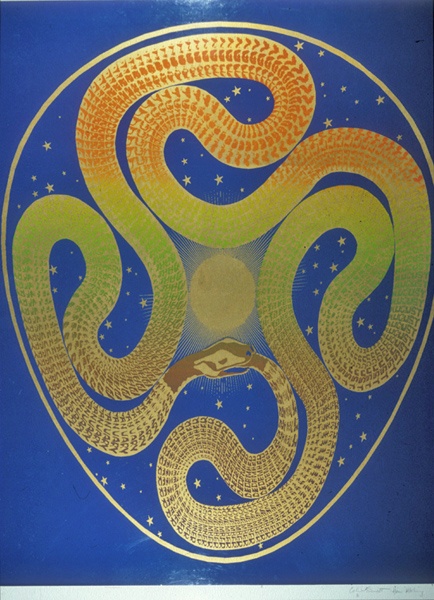


Two young computer film-makers Alan Kitching and Colin Emmett have devised a system called Antics to aid in the production of animated films. They used the system to produce the title sequence for the Burke Special TV programme and more recently a large full-colour drawing called The Snake. The stripes on the snake's body are made up of the names of the months of the year. The whole drawing can act as a calendar. Describing how it was made Colin says:
"The outline of the snake, the day division on the snake, and the positions of the stars were designed first, in a circular format. The designs for each month were worked out with pen and ink until they looked right then the outline of each letter in each month name was traced from the original design. These outlines were then digitised so that the computer programs could process them.
The blue background was made first. Two circles were generated to provide the inside and outside outline of the egg. Stars were generated and positioned on the previously described points. The sun was generated. The area enclosed by the two outlines of the snake were made to hide, or cover over the sun's rays. All these outlines were then distorted into an egg shape and scanned in. The result was output on the plotter to produce the artwork for the blue separation.
The snake patterns were produced from the twelve month names by transforming, or inbetweening, one name into the next so that, for instance, January transforms to February in 31 steps, or days. Each day was fitted into its appropriate day division on the original circular area and transformed into its position on the egg shaped area. The whole image was then scanned and output to the plotter. The coloured effect on the print was achieved during the silk-screening process. Gold paper was used for the print, so all areas not printed on show as gold."
The drawing by Antics was made on the ICL 1906A computer, input from a DMAC digitiser and output on a Stromberg Datagraphix 4020 microfilm plotter all at the SRC Atlas Computer Laboratory.
Although our print claims to be number 1 of 100 we are aware of only 12 copies, number 12 being in the digital artwork collection of the Victoria And Albert Museum, South Kensington.